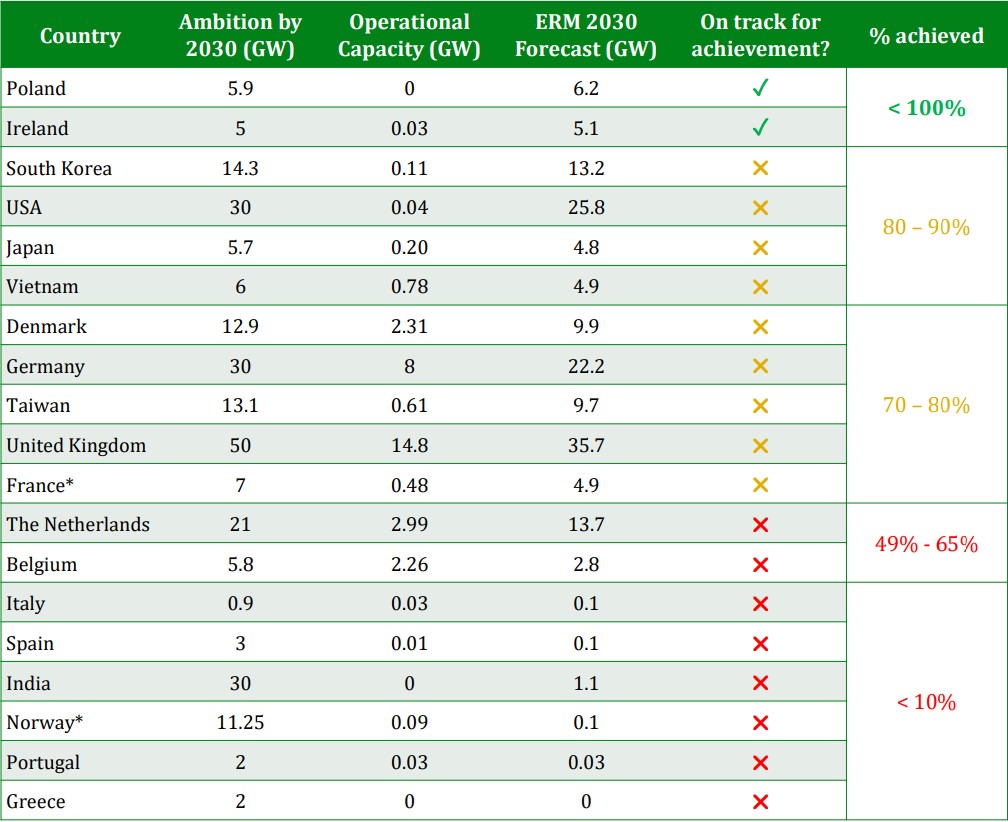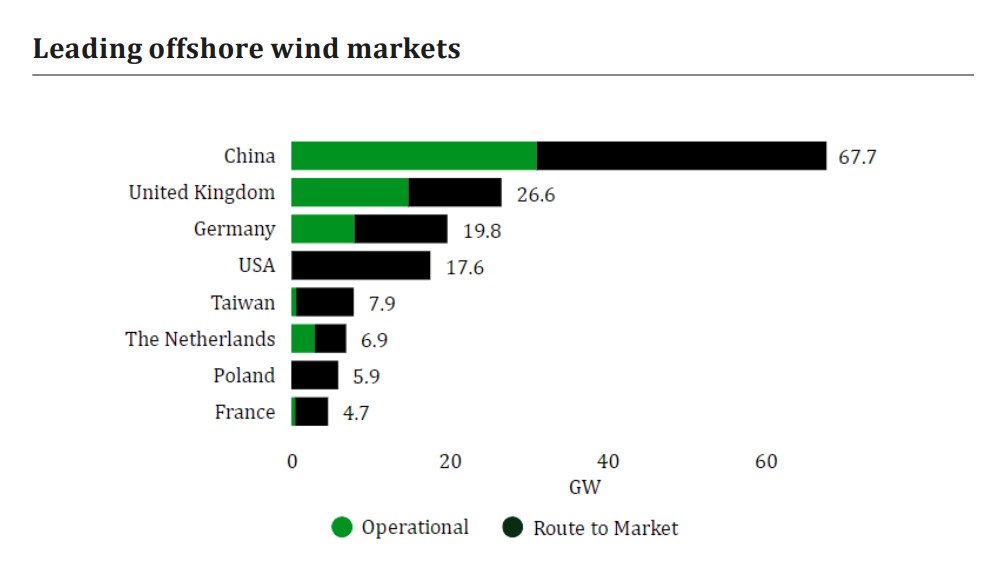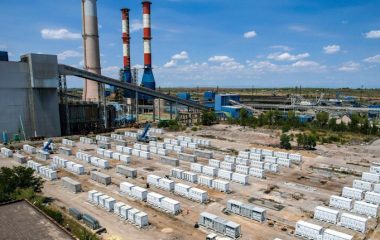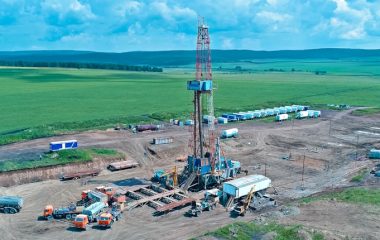
Photo: David Will from Pixabay
Among the 19 nations with explicit offshore wind goals for 2030, only Poland and Ireland seem on track to achieve their respective targets of 5.9 GW and 5 GW, according to the COP28 Global Offshore Wind Update Report, produced by advisory firm ERM.
The total amount of global operational offshore wind capacity is projected to reach 250 GW by 2030, but it is inadequate to meet the International Renewable Energy Agency’s (IRENA) 500 GW recommendation for net zero scenarios from its latest World Energy Outlook.
IRENA has said total renewable electricity capacity needs to be tripled to over 11,000 GW by 2030 and grow further to more than 33,000 GW by 2050 to maintain global warming below 1.5 degrees Celsius. Specifically, offshore wind capacity should grow from today’s 64 GW to 494 GW by 2030 and further to 2,465 GW by 2050, ERM said.
The 19 countries target a total of 255 GW. The company forecasts only 160 GW will become operational by 2030. Seven countries in the group are expected to miss their targets by 50% to 100%, it said.

According to the report, global operational capacity only accounts for 13% of the 494 GW needed by 2030 to meet IRENA’s net zero target.
Based on the global organization’s calculations, operational capacity needs to increase over sevenfold over the next seven years to keep warming below 1.5°C.
Assuming all 107 GW of currently secured capacity will be realized by 2030, an additional 323 GW that is under development will need to reach operations by 2030 to meet IRENA’s target, the report reads.
However, this year, the offshore wind industry has seen project delays and cancellations, driven by cost increases from supply chain challenges as well as increasing inflation and interest rates.
Disruption has mostly affected medium-term projects, not the long-term ones
Developers remain keen to continue their long-term growth plans despite the current 40% cost increase from interest rate hikes, inflation, and supply chain issues, the document reads. Disruption has mostly affected medium-term projects due to be constructed before the end of the decade, its authors pointed out.
Examples include the United Kingdom, where no capacity in the Annual Allocation Round (AR5) was awarded a route to market, the United States, where multiple offtake contracts are being renegotiated and terminated, and Poland, where developers are delaying final investment decisions, according to the report.
ERM said that with proven technology, investor interest, and a substantial project pipeline, the foundations for offshore wind expansion are set, but that critical challenges persist. The firm highlighted permitting, grid integration, supply chain issues, and financial support.
China took over

Since COP27, the major inflection point has been China overtaking the birthplace of offshore wind – Europe, in total operational capacity.
“Since COP27, 9 GW of offshore wind capacity entered operations whilst nearly 50 GW secured a route to market. Over 75% of the new operational capacity was built in China. Smaller advances in operational capacity were made across other markets; one offshore wind project became operational in each the UK, Norway, Germany, and Taiwan,” the report adds.
Floating wind will not advance quick enough to contribute to 2030 goals
ERM estimated the total global floating offshore wind pipeline at over 400 GW. Although floating developing capacity is catching up with fixed bottom capacity, the market is immature, and many barriers are hindering the industrialization of floating capacity, it said.
Only 218 MW of floating capacity is currently operational and only 158 MW has a secured route to market (excluding China).
Only a small proportion of floating capacity, around 0.04%, is expected to contribute to 2030 targets.
As fixed bottom remains the only proven commercial-scale offshore wind technology, governments should focus on fixed projects for short-term acceleration to meet 2030 targets, ERM claimed.


















Be the first one to comment on this article.